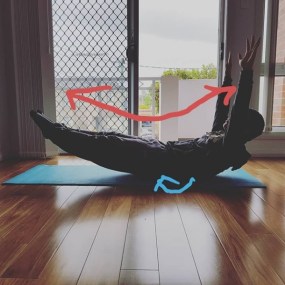Calisthenics Physio - Functional Training. Achieve Total Body Mastery.



What is Calisthenics?
Calisthenics can be considered like street gymnastics. It requires a high level of neuromuscular control in order to execute skills such as muscle ups, front levers, planches and handstands. Typically any bodyweight exercise can be called calisthenics training.
Unlike traditional training at the gym, calisthenics requires you to use your whole body. E.g. instead of sitting down on a lat pull down machine, in calisthenics you would be doing pull ups on a bar. However a lat pull down machine can still be incorporated into a calisthenics training routine in order to build fundamental pulling strength. In this fashion pull ups would require core stability as opposed to sitting down which requires very minimal core.
This sport is all about levers and placing the body into great mechanical disadvantages. Great calisthenics athletes all have great levers which mean they can control their limbs in fully extended positions. Have a look at all the pictures, none of these athletes are in tucked positions, they are all "open bodied".
Injuries
Injuries are painful but what hurts more is the pain of not being able to train - athletes will know what I mean.
Just like any sport, injuries can occur in calisthenics. This sport requires precise form and technique, balanced whole body strength, advanced motor control and body awareness; any slight deviation from normal can be a recipe for injury.

Calisthenics Physio
I coach aspiring athletes how to progress quickly and best of all, injury free!
That is where I step in as a calisthenics physio. Having current training experience in calisthenics, I can use my physiotherapy knowledge to breakdown poor m
ovement patterns.
A common example I see all the time is the muscle up. Usually beginners starting to learn this technique find themselves unable to switch their grip from under the bar to over the bar. What they tend to do is 'chicken wing' up, i.e. hunching one side of their shoulder over the bar and then the other shoulder. Poor shoulder....great forces of compression is generated in such positions which is a no no for your subacromial bursa. What's the worst that can happen? Bursitis, a painful pinching feeling in the shoulder everytime you raise your shoulder.
This is a very obvious example of poor training technique. But what can you do if that is the only way you can do a muscle up (albeit with dirty form)? Read on to find out.
Rehabilitation

One step back but 2 steps forward.
As a calisthenics physio I can identify such dysfunctional motor patterns and show you exercises that need to be mastered before attempting the muscle up cleanly.
Rehab can include physiotherapy such as dry needling, soft tissue release, manipulation/adjustments, biomechanical analysis...you can read more about my skillset here. Colin Sau
Once the pain is stabilised this is where we get a chance to see the muscle imbalances and poor techniques causing your injury. By providing specific exercises, you can restore that shoulder range, have proper scapular stability and go on your way to doing a clean muscle up!
Prehabilitation
Prevention is the best cure.
Most people come see me when it's too late, when the pain has kicked in and they no longer are able to train. This is where "prehab" comes in. If you know something is not right, then its time to consider seeing a calisthenics physio.
A calisthenics physio will be able to identify biomechanical issues hindering your performance. Finding those problems is key to prevent an injury from occurring.

My Experience
I am a calisthenics physio.
I myself have been doing calisthenics for years now. Total body mastery and training for skills is much more interesting to me than being able to lift heavier numbers. When you go to the gym there are quite a selection of machines to choose from. You sit down, you select your weight and you lift or curl. Training in this fashion will only get you good at exactly that. Sitting down and lifting in that same way. (Not saying that is bad as lifting in such ways is great for targeted muscle hypertrophy). Calisthenics training however is the opposite. You need to use your whole body to achieve all sorts of complex skills such as handstands, planches, front levers and muscle ups. It requires strict neuromuscular control incorporating balance, strength and proprioception all at once which makes the sport so hard but very rewarding upon skill mastery.
I can teach you the different elements to the sport. When you first start training calisthenics you need good body awareness and full functional mobility. Things such as achieving full pelvic tilt ability, having full thoracic extension, normal scapular humeral rhythm, full activation of the anterior and posterior anatomical slings, strong scapular stability, and many more.
If you do not pass those key movement patterns then you will be at risk to injury and your progression will be slow. People tend to think that you need to train harder to progress faster, however why not train harder and smarter. Like I said previously, having good motor patterns in this sport and any other sport for the matter is key to athletic mastery.
Once we sort out those problems then I will show you different progressions needed to attain your goal, whether it be to do a planche, handstand etc.
Train Smarter
I will teach you the different myofascial slings [Andry Vleeming, Diane Lee, and Thomas Myers] and synergistic muscle groups that make up the foundations of this sport. You can almost divide the type of skills learnt in calisthenics into anterior sling dominent or posterior sling dominent. An e.g. is a front lever which is a very posterior oblique sling dominent exercise. That is you are training your core, thoracolumbar fascia and latissimus dorsi muscles. Training with synergy in other words.
I can identify weak links in your system and provide you with exercises to strengthen such 'holes' and progress you to training more dynamically and functionally. In the above example you need to master the hollow body. It is an essential when performing a front lever and also planches, I sit, handstands (all of which is basically holding the hollow body in different body orientations). If you can't fully posteriorly tilt your pelvis then you need to work on shortening the lever i.e. try holding the hollow body with knees bent.


Classes Available
Be empowered, achieve total body mastery, elevate your game.
Don't let injuries get in the way of your training. See a calisthenics physio today!
Contact us to start learning calisthenics.
Author: Colin Sau (Principal Physiotherapist, Evolution Health Clinic).
